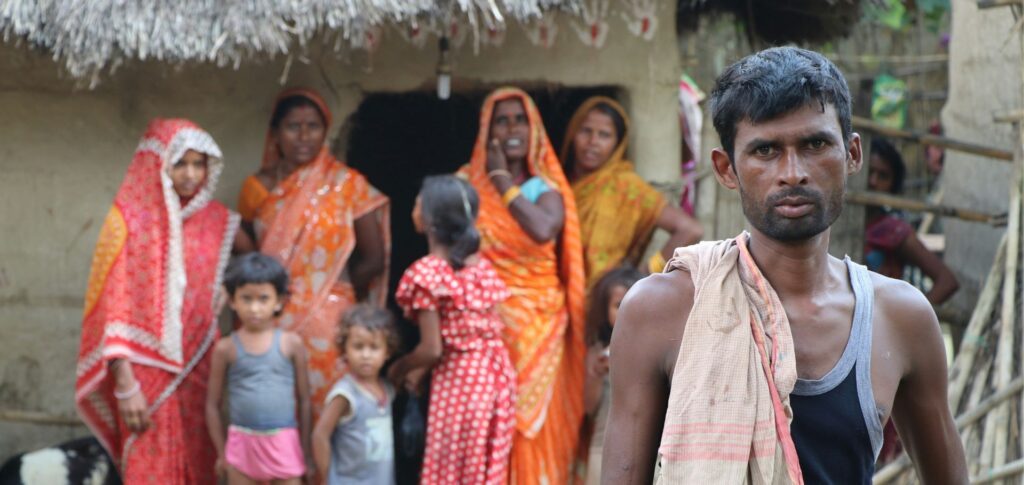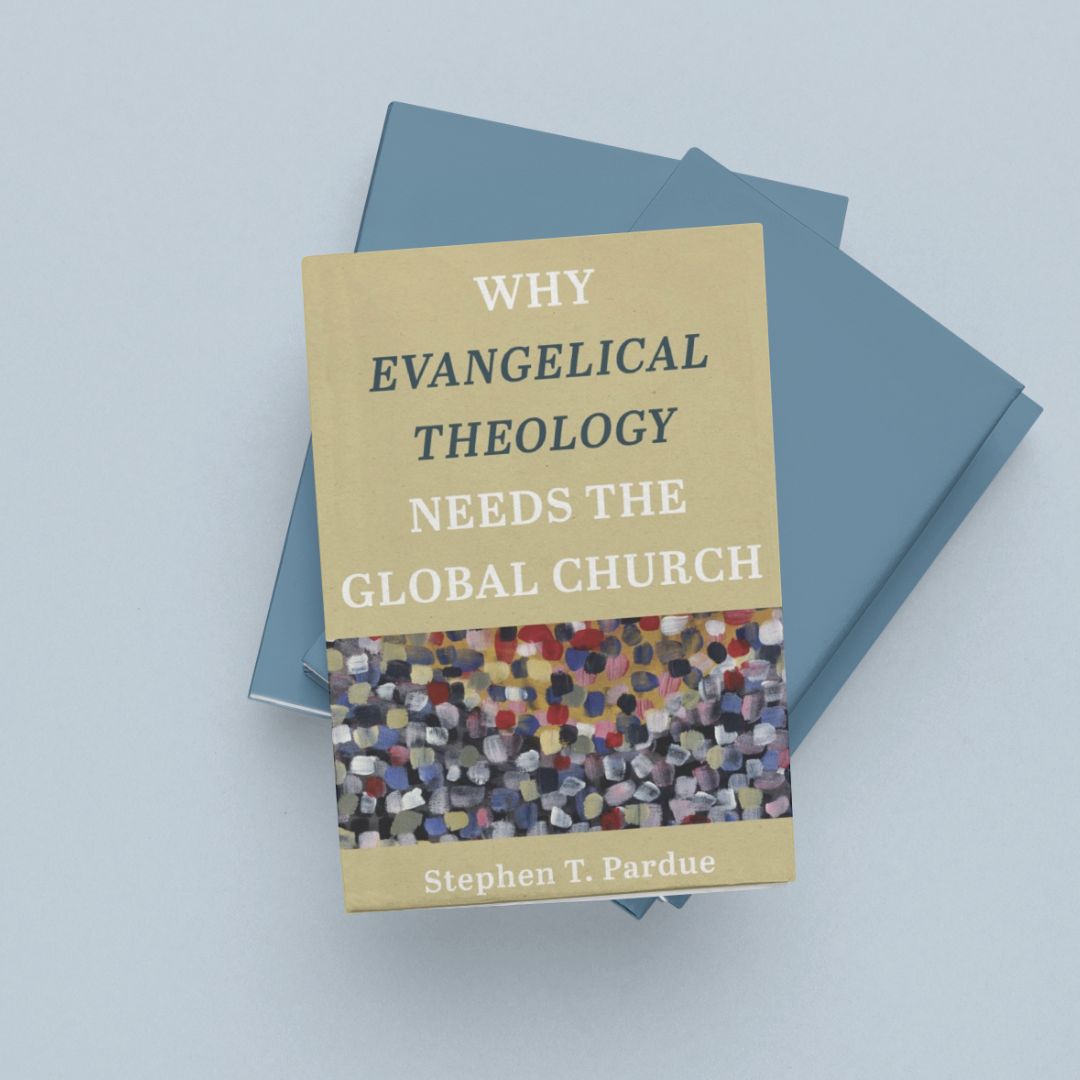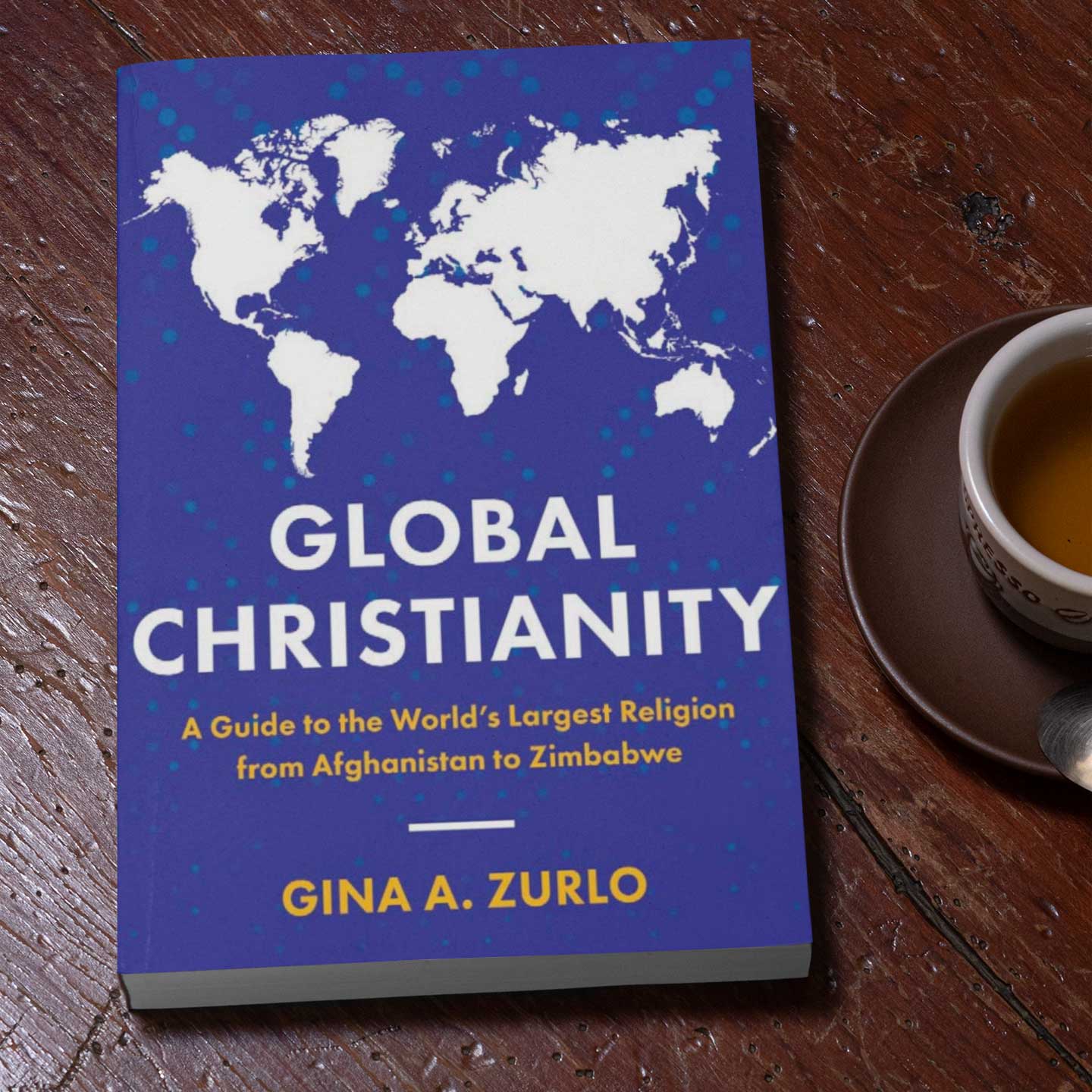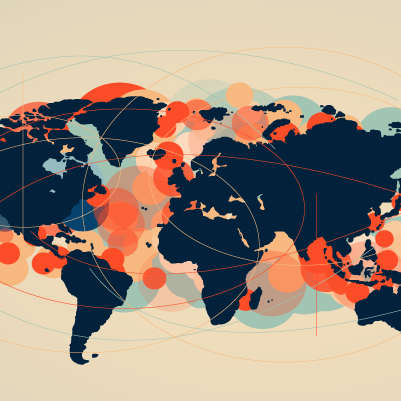Majority World Mission Movements
Introduction
The church in the non-Western majority world of Latin America, Asia, and Africa has exploded in growth. Places previously known as mission fields have sent out new missionary forces. In this report, Castro Cristian provides a descriptive history of the four stages of the Latin American missionary movement and the establishment of COMIBAM Internacional with over 30,000 missionaries sent worldwide. David Ro summarizes the Asian mission movement focusing on Korea, China, and India with mentions of other Asian countries. Uchenna Anyanwu writes about the African mission with the migration of peoples into the West, along with missions to unreached peoples within the continent of Africa.
Mission Movements From Latin America
At the 1916 congress of world missions in Panama—organized by foreign missions organizations—Latin America was declared a mission field, and countries were assigned to different international missions. Known records cite that 235 delegates from 50 missionary societies working in Latin America at that time were gathered; of these, only 27 were Latinos. The official language of the congress was English, making the voice of the Latin American church very small, if not almost null. This fact is relevant, because it indicates that at that historical moment, the small Latin church was not considered a participant in world mission.
On the other hand, the foreign missionaries did not think of Latinos as a possible missionary force, as Pablo Carrillo mentions in his book Huellas en el Desierto: ‘It did not cross the minds of the mostly foreign missionary community in Latin America, the idea that the people that were being reached with the Gospel would one day become a missionary force inside and outside of their countries.’1

The Inescapable Call: Evangelization in depth
In 1921 the Latin America Mission (LAM) was founded, which would have a very strong impact on the small Latin-American church of that time through evangelistic and social action projects. But at the same time, LAM would greatly contribute to the awakening of the missionary vision in Latin America.
In the spring of 1964, Dr Kenneth Strachan of LAM gave a series of speeches on missions at Fuller Seminary called ‘The Inescapable Call: Missionary Work of the Church in the Light of the Urgent Needs and Opportunities of Today’s World’. The dissertations summarized the experience and the theological foundation of evangelism in the Depth Movement, which emerged from LAM under Dr Strachan.
The basic tenets of Depth Evangelism were almost universally applied and were decades ahead of what is now commonly accepted by churches worldwide, especially in Latin America. There were very few known missionary efforts in the region in those days. One was the Congress on Christian Work held in 1925 in Montevideo, Uruguay. Another was the Pan-American Evangelical Congress in Havana, Cuba held in 1929. Although small, like a grain of sand on a beach, they both contributed to the missionary vision in Latin America.
The Influence of Lausanne in Latin America
The First Lausanne Congress in 1974 is the most important event in the history of evangelical mission. Its influence reached Latin America through the many Latinos who were there, but also through the literature and subsequent consultations organized by the Lausanne Movement. To be more precise, the early pioneers of Latin American evangelical missiology, such as Samuel Escobar, René Padilla, and others, made important contributions at the Lausanne Congress to form a missionary worldview based on a clear understanding of the gospel. The emphasis on the theology of the kingdom of God and the consequences of the church’s presence in society changed the direction of world missiology and global missionary action. We praise God for this Latin American cooperation with the worldwide evangelical community.
The Birth of the First Latin Missionary Movements
In 1976 the first national missionary association of the continent—the Association of Brazilian Transcultural Missions (AMTB)—was organized by the initiative of several national leaders and foreign missionaries working in Brazil. Jonathan dos Santos was the first president of AMTB, and the association was founded by uniting nine missionary agencies representing the participation of several denominations. Years later, another Latin American country took on the challenge of becoming a missionary force. In 1982, in the small town of Villa Giardini, Córdoba, Argentina, under the leadership of pastors and missionaries, the World Missions Network (RMM) was born to mobilize the Argentine church to all nations.
The Birth of COMIBAM: From mission field to force
It is worth mentioning that the leadership of the AMTB and the RMM were at the time prophetic voices for the church, regarding the need to take responsibility as a continent in the mission of God. Thus, the Latin American Evangelical Fellowship (CONELA) convened a meeting of leaders in 1984 in Mexico to discuss the organization of an international congress with the purpose of promoting the development of the missionary vision in the region. This first Ibero-American Missionary Congress was held in 1987 in Sao Paolo, Brazil, bringing together more than three thousand representatives from all the Latin American nations, Spain and Portugal, as well as observers from other countries. They gathered to hear about the global missionary task and make a commitment to the formation of a missionary movement from Ibero-America. It was on that occasion that Luis Bush emphatically proclaimed, ‘In 1916, Latin America was declared a mission field. Today, in 1987, Latin America is declared a missionary force.’2
From that first Congress, COMIBAM Internacional3 emerged and developed its relationships with other national, regional, and global networks, helping to establish working groups, convening consultations, producing books in Spanish and Portuguese, and initiating the publication of the magazine Ellos y Nosotros (Them and Us). In the 1988 edition of Operation World, Patrick Johnstone reported a total of 1,314 missionaries from Latin America. That number rose to more than 4,482 in 1995. Of these, 1,364 were ministering outside their country, and 2,126 were involved in cross-cultural work.
God moved in the church throughout the region, strengthening national missionary movements where they already existed and giving birth where they had not yet been formed. Some countries had been sending missionaries since the beginning of the 20th century and had also established national networks of missionary collaboration, but the 1987 Congress sparked a strong awakening to promote cross-cultural missionary work.
National Missionary Cooperations (CMN) in Ibero-America
Over the years, the movement began to organize itself, appointed a board of directors, elected an executive director, and established a small office. But without a doubt, what had the greatest influence was the birth of the national missionary movements, today called National Missionary Cooperations (CMN) in the different countries of Ibero-America, thus becoming an arm for the national church—a space for organizations, ministries, and missionaries—with the purpose of sharing experiences and resources, and coordinating missionary efforts from their countries to the world. To date, 25 National Missionary Cooperations have participated in COMIBAM.4 These 25 national missionary cooperations are part of the eight collaborative regions of COMIBAM: Iberia, North America, Mexico, Central America, Caribbean, Andean, Southern Cone, and Brazil. Currently, the national missionary cooperations have a combined total of more than 1,000 participating and collaborating missionary organizations.
COMIBAM in Movement
We can conclude that throughout these years, COMIBAM Internacional has been a space for the gathering of national missionary movements of the region and the church for the purpose of strategy formation, and for the building of relationships that have the potential to enhance collaboration with the global missionary community. A very conservative estimate reveals that approximately 10 to 15 percent of the church participates actively or directly in global mission. Today we register more than 30,000 missionaries sent by churches to more than 200 countries, with an estimated monthly financial investment of USD 15,000,000. Of the total number of missionaries sent, approximately 17,000 missionaries come from Brazil and 1,200 from Argentina, which indicates that the remaining 11,800 missionaries come from the other 23 member countries of COMIBAM. In the recent Consultation of Unreached Peoples held in Panama, the missionary movement of Ibero-America committed to accompany the church in the task of praying and taking the gospel to at least 1,850 unreached people groups. Today, we must say that by God’s sovereign grace, COMIBAM Internacional is fulfilling its mission and remains dedicated to its vision, mission, and values.

Mission Movements from Asia
The church in Asia—working in a context populated by 5,300 unreached people groups living according to a complex mix of Hinduism, Buddhism, Islam, Communism, and various folk religions—is now participating in global mission. In the 20th century, despite numerous religious and political challenges, growing nationalism and persecution, societal turmoil through urbanization and globalization, and the influences of secularism and materialism, Christianity in Asia has grown twice as fast as the population, representing 8.2 percent of the population of 4.5 billion people. As the Western missionary movement reaches ‘old age’ and navigates a different set of conditions5, the Asian church is preparing for the challenge of global mission in this next century.
South Korea
During its period of rapid industrialization and urbanization, Korean society was characterized by tremendous instability. The rapid changes fostered a breakdown in the traditional family structure, labor disputes, a gap between the rich and poor, and deterioration of social norms. Within this context of social instability, Christianity played a significant role in addressing societal issues by providing a spiritual and moral compass. Several strengths of the Korean church have included 1) early dawn prayer meetings, 2) vibrant Sunday worship, 3) tithing and stewardship, 4) theological education, 5) social engagement, and 6) emphasis on mission. South Korea’s missionary movement was the fruit of evangelistic crusades, student movements, and explosive church growth in the 1970s and 1980s. Christianity in South Korea is estimated at around 32 percent of the population, including 9.2 million Protestants (18 percent). In 2020, pre-COVID-19, 22,259 South Korean missionaries were serving overseas.
A large portion of Korean missionaries are cross-culturally ordained pastors. Most are supported by churches and mission agencies who focus on evangelism, discipleship, church planting, and leadership training. Many Korean missionaries are involved in church planting in harsh, remote areas, with some engaged in holistic ministries for the poor. The Korean church and mission have recently plateaued due to secularization, a general disinterest in religion among young people, and the possible impact of mega-church scandals. For this reason, the Korean missionary population is gradually aging.
China
China’s explosive house church growth in the 1980s in rural communities, and church growth among intellectuals in the cities after 1989 laid the grounds for a missionary movement. Christianity in China is estimated at around 6 to 7 percent of the population, with around 90 million Christians (estimated at 60 million house church and 30 million TSPM Christians). Christianity grew by addressing societal issues during urbanization. The average salary in China’s top-tier cities is now comparable to Seoul, South Korea, becoming a financial resource for missionary sending. In the mid-2000s, unregistered house churches in the cities started to rent office space, transitioning from the home to more open, larger-sized congregations. Churches began to collect offerings to pay pastoral salaries and support ministries, including missions. However, the tightened religion policy in 2018 leading to increased persecution, combined with COVID-19 in 2020, have directed churches back into homes.
China’s missionary movement, Mission China (formerly Mission China 2030), has emerged among the unregistered house churches in the cities. The official Three-Self Patriotic Movement (TSPM) church is prevented by law from conducting evangelistic activities outside the walls of the local church building, but some nonetheless participate in indirect evangelism through addressing social concerns in their communities. House church leaders hosted several large annual Mission China conferences overseas and have declared a goal ‘to send 20,000 missionaries by 2030’. Mission China activities moved online during COVID-19 with prayer and mission mobilization. Over 200,000 people have taken Kairos, an online missions mobilization course. A separate Back to Jerusalem movement has sent hundreds of missionaries Westward, primarily from rural Henan and Anhui. The Wenzhou church also has some mission involvement through its extensive overseas entrepreneurial businesses.
Mission China’s ‘core strength’ is a sacrificial missionary spirit birthed from a context of persecution. Suffering has prepared the church to send missionaries to harsh unreached areas. Persecution has also created innovative solutions to minister in closed societies hostile to Christians. Coming from a significant-sized Christian population in a large country with geopolitical power and economic strength also contributes to Chinese pastors’ sense of mission responsibility for the world. However, amidst increased political persecution in the current political climate, it is unlikely a mass movement of missionaries would emerge. Though hard to verify, an estimated 2,000 mainland Chinese house church missionaries serve cross-culturally overseas.
India
India’s church growth in the mid-nineteenth century can largely be credited to evangelization focusing on poorer members of society. The working class is receptive to the gospel, particularly in rural areas and among migrants in urban slums such as the Dalits, the outcast ‘untouchables’ in the Hindu caste system. The church’s expansion in the last fifty years has generally centered in Southern India. India’s missionary movement began to reach traditional Hindu, Buddhist, and Islamic majorities in northern India. Indian missionaries are involved in ‘cross-cultural’ church planting among the 2,138 unreached people groups (UPGs), with 99 percent of missionaries working cross-culturally amongst ethnic groups within the country. Indian missionary growth ‘has also led to a change in understanding of the title “missionary”, a term traditionally used only to describe those who came from abroad and associated with “white” people’.6 Christianity in India is estimated at 4 to 5 percent, comprising over 50 million Christians. The India Missions Association (IMA) has previously claimed 60,000 Indian workers with 300 indigenous mission agencies working in India.
India’s main strength is the availability of a large number of volunteers. Missionaries are often bi-vocational, combining ministry with a job or receiving support from the diaspora or overseas. Christianity in India has been viewed with hostility as a foreign religion, and the church is experiencing growing persecution. Conversion laws have been used to accuse Christians of using illegal means to proselytize. The decline in democratic freedoms for the church escalated after Prime Minister Modi’s victory in 2014. The recent rise of nationalism has witnessed the removal of foreign influence with increased aggression towards local churches. The new tightened environment has decreased mission activities for a season, but a new indigenous church movement is taking place among the high-caste Hindu communities in Northern India.
Other Asian Countries
Other Asian countries are also participating in missions. The number of Filipino overseas missionaries involved in cross-cultural work is around 2,000. A Filipino church in Manila with 200,000 members has commissioned over 150 missionaries, with many planting cross-cultural churches across Asia. Thousands more overseas Filipino workers (OFWs) active as domestic helpers, nannies, construction workers, engineers, architects, nurses, IT specialists, chefs, seafarers, and more are also crossing cultural borders with the gospel. Indonesia, Malaysia, Hong Kong, and Singapore have also witnessed significant church growth, with Christians estimated at 9 to 20 percent of the population. In Indonesia, around 1,000 indigenous workers are involved in cross-cultural church planting among the 130 unreached people groups within the country. Malaysia also has a similar number of cross-cultural workers in many of the 157 people groups, including several hundred cross-cultural missionaries sent overseas. Hong Kong has commissioned 670 overseas career missionaries (2023), Taiwan has sent 600 (2017), and Singapore has at least 428 (2019).
Arise Asia
A new dynamic of Asian mission movement is on the horizon. Asian leaders from the Asia Evangelical Alliance, Asia Theological Association, CCCOWE, Movement Day, and the Lausanne Movement met in 2022 to discuss the future of the Asian church and its mission, primarily within the Asian context. In July 2023, over 1,800 students and young people from 37 Asian countries gathered at Arise Asia with the theme of global mission to ‘go where there is no gospel’. Several hundred cross-cultural mission commitments were made by young people with an average age of 25. An Arise Asia movement is gaining momentum from Millennials and Gen Z. The church in Asia is at a turning point in history, transitioning from a missionary-receiving to a missionary-sending continent.
Mission Movements from Africa
Redemptive accounts in the Scriptures are replete with migration narratives. From Abraham’s call to baby Jesus in Egypt, we read of peoples on the move and God’s use of those moves to weave the tapestry of peoples’ redemption. The past one and half centuries witnessed the movement of Europeans across the world engaging in exploration, colonization, commerce, and Christian missionary activities.7 Migration trends began to reverse from the mid-twentieth century. The phenomenon of South-North migration has attracted broad scholarly discussions as well as narratives of mission movements within Africa and from Africa to the rest—an aspect of global migration trends. Thus, the phenomenon has occasioned the movement of Africans (not only within the African continent itself but much more beyond Africa) evidently leading to potential mission movement from Africa to the rest.
Insofar as the potential for mission movements involving African immigrants is concerned, more and more African immigrant congregations are emerging in several cities in Europe, North America, and Oceania—host regions for many African immigrants. African immigrant Christians are planting churches in the cities of their host countries in the Global North. The Church of Nigeria (Anglican Communion), for example, now has two dioceses in the United States and Canada. The numerical strength of Nigerian Anglican priests and other African Anglicans—some of whom studied in seminaries in the United States and hold PhDs and DMin degrees—is growing. The churches they are planting usually begin with a few families. As their numbers increase, they purchase religious places of worship belonging to declining American mainline Protestant denominations.8 Some of the clergy have taken up positions as pastors of some of these mainline American Protestant churches. This trend is not peculiar to Nigerian Anglicans.9
The Spirit of mission is also moving in North Africa where Egyptian followers of Jesus (from both Presbyterian and other Protestant denominations) are forming mission-sending structures. What makes this exciting is that some Egyptian followers of Jesus now share the vision to take the gospel to the rest of the Arab world. The Evangelical Theological Seminary in Cairo, for example, has incorporated mission training in their curriculum. A missionary movement from Egypt to the rest of the Arab world can be expected to emerge in the coming quarter of a century.
What potential roles, then, could African churches and African missionaries serving outside Africa play in missions in the coming quarter or half of the century, particularly within their immigrant geographical context?
Historical Movements from Africa
African indigenous mission organizations—both denominational and non-denominational—have been emerging since the mid-1970s.
The Second Consultation of the Movement for African National Initiatives (MANI) was held in Abuja, Nigeria, between September 5 and 9, 2011. The Consultation’s declaration states in part: ‘We believe God has sufficiently prepared and endowed the African church for taking the Gospel to every part of our continent and of the world.’10 How can African immigrant followers of Jesus be true to such a commitment to express their faith in the lands where they now live?
One example of repute of the non-denominational African indigenous mission organizations sending cross-cultural workers is Calvary Ministries (CAPRO)—an organization started in northern Nigeria in 1975.11 The Evangelical Missions Society (EMS) is another example—a denominational mission organization of the Evangelical Church Winning All (ECWA). From Egypt to the Arab world are a few emerging organizations that for security reasons we need not name at this time. Amidst the emerging movements from Africa to the rest, challenges and opportunities exist.

Missional Opportunities for the African Church
With major changes on the African continent and in the world come critical missional opportunities for the African church. Below are just a few of the available and emerging opportunities.
- Global Denominational Leadership: As the numerical strength of mainline American and European churches declines, African Christians could seize the opportunity to become members and pastors of those churches. Already there are a few African pastors who, having completed studies at well-respected evangelical seminaries in the United States, are today serving as pastors of all-White American mainline congregations within the United States. Furthermore, the diasporic African Christian populations could become a missionary force irrespective of the current trend of most majority-African immigrant churches in their host countries.
- Global Scholars: As some African Christians train in theological institutions in the Global North, they could become a missionary teaching force within the Western world. Some have obtained their PhDs and are publishing scholarly materials in reputed international peer-reviewed journals. These could impact theological training in the coming quarter or half of this century when their scholarly writings gain ascendency into required readings of seminary syllabi in North American and European theological institutions.
- Spiritual Emphasis: Most African Christians from evangelical and Pentecostal backgrounds emphasize prayer and spiritual power. Andrew F. Walls asserted that when he arrived in West Africa, it struck him that while he was ‘happily pontificating on . . . a patchwork quilt of diverse fragments that constitutes second-century Christian literature, [he] was actually living in a second-century church. The life, worship and understanding of a community in its second century Christian allegiance was going on all around [him]’.12 The fervency in prayer and awareness of the impact that spiritual powers have in peoples’ lives and society are evident among African evangelical and Pentecostal Christians. Thus, the presence of Africans working with non-Africans in global mission could provide some spiritual and prayer impulse among their colleagues of non-African origin.
- Vibrancy of Youth and Women: Yaw Perbi and Sam Ngugi present some potential and persistent problems.13 Among these is the vibrant faith of youths and women. Whereas the younger generations of many European and North American Christians are becoming ‘nones’ (without faith affiliation), African Christian youths, on the other hand, are vibrant and passionate in their faith. This is even more true of women. The influence of women in mission has continued to grow in the last twenty-five years, and we can expect that women’s power and influence will continue to make significant contributions toward cross-cultural global mission in the next quarter of the century. Often, the contribution and impact that women make in the spheres of Christian ministries and mission are, however, downplayed. Leaders in mission, Christian education, and churches need to identify and harness the power of Christian women in the various ministries of the body of Christ, particularly in mission.
Challenges for African Mission Movements
With all that said, a challenge that African missionary movements must seek to overcome lies with breaking through the cultural barriers that hinder non-Africans from being drawn to their message and mission.
- Cross-Cultural Outreach: African diasporic churches need to become intentionally inclined to proclaiming the gospel to those who are non-Africans. In a paper presented at a MANI conference, Dr Emmanuel Bediako observed that ‘. . . African Diasporic churches are made up of about 99% Africans or people of African descent, and they are mostly reaching out to African migrants’.14 Inasmuch as missionary potential exists among African immigrant populations in the West, a close observation of the trends depicts a lack of missionary engagement that transcends the homogenous boundaries of the African immigrant Christian demographics. Put differently, the majority of African followers of Jesus engaging in Christian ministry in their host countries are doing so within the homogenous spheres of their cultural milieu, thus lacking a cross-cultural engagement of unreached peoples of non-African origin. This is a challenge that needs to be addressed.
- Cross-Cultural Contextualization: African diasporic churches need to adapt their ways of doing church to cultural norms, values, and communication styles in their host countries. Africans’ conceptualization of time is an example. Some diasporic African churches can spend two to three hours in a Sunday worship service, and then another hour of ‘fellowship after fellowship’ at the end of the worship service. A Caucasian American invited to such a worship service is unlikely to stay beyond an hour and a half and may not return. Besides the issue of the cultural concept of time, there exist several other cultural nuances that must be reevaluated. The principles of contextualization must also be applied to avoid repelling non-Africans who might show interest in the message and worship of African diaspora Christians.
- Cultural Discrimination: Other challenges include visa and immigration restrictions, financial capacity, and racial discrimination and prejudice. In addition to possessing a good self-worth in Christ and a self-concept grounded on God’s word, African Christians engaging in global mission in contexts where they face racial discrimination and prejudice will require resilience and the capacity to navigate the challenging social dynamics in which they may find themselves.
In sum, with the shift of Christianity’s center of gravity to Africa in the last few decades, the church in Africa possesses immense potential for a global missionary movement in the coming 25 years, but that must be done in collaboration with the full global church. The potential needs to be explored, the existing opportunities seized and made most of, and the challenges critically and constructively overcome so that the nations will be glad and sing for joy.
Conclusion
In a new era of global mission, a new missionary force has emerged from Latin America, Asia, and Africa. The new dynamic in global missions is polycentric, drawing from multiple centers across the majority world. These new missionary sending centers have their own unique strategies, methods, and challenges according to their cultural, socio-economic, and political contexts. This is just the beginning of a new missionary era that is deeply connected to a global mission community. The Great Commission’s call rests equally on believers worldwide—to bring the gospel message to the unreached peoples of the ends of the earth; to go to where there is no gospel.
Endnotes
- Pablo Carrillo. Huellas en el Desierto (PM Internacional, 2010) 20.
- Luis Bush. ‘Our History’. COMIBAM Internacional. www.comibam.org.
- The title of the 1987 gathering was later changed from ‘congress’ to ‘cooperation’. The resulting mission movement of the same name—the Ibero-American Missionary Cooperation—is also known as COMIBAM Internacional.
- You can learn more about COMIBAM’s CMNs at https://comibam.org/es/cooperaciones-misioneras/.
- Andrew Walls. The Missionary Movement in Christian History: Studies in the Transmission of Faith (Maryknoll, NY: Orbis Books, 1996) 261.
- Mats Ekström and Marianna Patrona (eds). Talking Politics in Broadcast Media: Cross-cultural Perspectives on Political Interviewing, Journalism and Accountability (Amsterdam: John Benjamins, 2011) 232.
- Brian Stanley. The Bible and the Flag: Protestant Missions and British Imperialism in the Nineteenth and Twentieth Centuries (Leicester, England: Apollos, 1990).
- Mainline Protestant denominations include ‘principally the Methodist, Lutheran, Presbyterian, and Episcopalian churches’ whereas ‘conservative denominations [include] the Southern Baptist Convention, the Assemblies of God, the Pentecostal and Holiness churches, and some [others]’. Michael Hout, Andrew Greeley, and Melissa Wilde. ‘The Demographic Imperative in Religious Change in the United States. Survey Research Center (SRC) (Berkeley, CA: University of California, Berkeley, 2001) 2.
- The same is true of the Redeemed Christian Church of God (RCCG), The Church of Pentecost from Ghana, the Assemblies of God from Africa, Christ Embassy of Nigeria, the Deeper Life Bible Church of Nigeria, the Methodist Church Ghana, the Presbyterian Church of Ghana, the Seventh-day Adventist Church, and other church denominations with ties in Africa, whether they are mainline denominations or African-initiated churches (AICs).
- ‘MANI 2011 Declaration.’ MANI (Movement for African National Initiatives, 2011).
- CAPRO is an acronym for Calvary Productions, a name that later was changed to Calvary Ministries, but the acronym (CAPRO) by which the ministry was known was retained. In Francophone countries, it is known as Action Missionnaire Interafricaine (AMI). See: Festus Ndukwe, ed. From Africa to the World: The CAPRO Story: The Birth and Growth of a Mission (Lagos, Nigeria: CAPRO Media, 2019).
- Andrew F. Walls. The Missionary Movement in Christian History: Studies in the Transmission of Faith (Maryknoll, NY: Orbis, 1996) xiii.
- Yaw Perbi and Sam Ngugi. Africa to the Rest: From Mission Field to Mission Force (Again) (Maitland, FL: Xulon, 2022) 49–99.
- Emmanuel Bediako. ‘Africa in Missions: Africa Doing Missions in Diaspora.’ Presentation at MANI (2011). Accessed Jan. 18, 2021) slide 31. https://maniafrica.com/mani/wp-content/uploads/2015/07/Diaspora-Africa-in-Mission.ppt.



